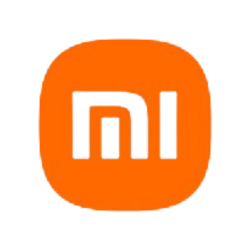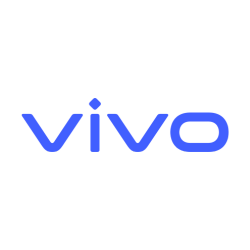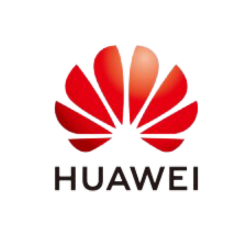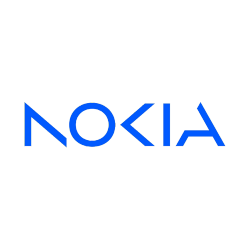Sony Ericsson Zylo Specs Pricing Pros & Cons Revealed

Overview of the Sony Ericsson Zylo
The Sony Ericsson Zylo was a feature phone introduced in 2010, capturing the market with its blend of style and functionality. As a part of Sony Ericsson's efforts to cater to music lovers, the Zylo was designed with features tailored to enhance the audio experience, such as support for high-quality music files and easy access to controls. Despite being a feature phone, it offered several functionalities that appealed to a wide range of users.
Design and Build
The Sony Ericsson Zylo featured a compact design with dimensions of 103 x 52 x 16 mm, making it quite portable and easy to hold. Weighing 115 grams, it offered a sturdy feel without being cumbersome. Its slide-out form factor was a hallmark of the era, providing a tactile feel when accessing the keyboard for typing. The Zylo came in various colors including Jazz Black, Chacha Silver, Swing Pink, Energetic Black, Meteorite White, and Nebula Red, giving users a range of aesthetic choices.
Display
The device sported a 2.6-inch TFT display with 256K colors, providing a clear and vibrant screen experience. With a resolution of 240 x 320 pixels (~154 ppi density), it offered reasonable clarity for viewing photos, browsing, and gaming. Additionally, the display was protected by scratch-resistant glass, adding an extra layer of durability against everyday use.
Camera
Equipped with a 3.15 MP main camera, the Sony Ericsson Zylo was capable of capturing photos with a single click. The camera supported video recording at 480p@24fps, which was fairly standard for phones of that era. Although it lacked a front-facing camera, the main camera sufficed for basic photography needs, allowing users to capture moments on the go.
Audio and Sound Features
The Zylo stood out with its focus on music, reflecting Sony Ericsson's commitment to a superior audio experience. It included a stereo FM radio with RDS and the ability to play high-quality music files, making it a favorite among music enthusiasts. The phone also had a loudspeaker for listening without headphones, although it lacked a 3.5mm headphone jack, which could be a consideration for some users.
Connectivity
In terms of connectivity, the Sony Ericsson Zylo supported GSM and HSPA network technologies. The phone operated over 2G and select 3G bands, allowing for mobile calling and data usage, albeit at slower speeds than modern smartphones. Bluetooth 2.1 with A2DP support provided wireless connectivity options for pairing with devices such as wireless headsets. The inclusion of USB 2.0 facilitated efficient data transfers and charging.
Software and User Interface
The Zylo ran on a feature phone OS, focusing on core functionalities like calls, messaging, and basic internet browsing with its WAP 2.0/xHTML, and NetFront browsers. Java MIDP 2.0 allowed users to enjoy compatible applications and games, including motion-based and downloadable ones. The OS supported SMS (threaded view), MMS, email, push email, and IM, which were considered quite comprehensive for feature phones at the time.
Storage and Memory
Internally, the device came with 260 MB of storage, which seemed modest but was extendable via the dedicated microSDHC slot. This provided flexibility for users needing more storage space for music, photos, and apps. The phonebook boasted a capacity for 2000 entries with photocall functionality, which was advantageous for organizing contacts and keeping in touch with friend and family networks.
Battery Life
Powered by a removable Li-Ion battery, the Sony Ericsson Zylo could stand by for up to 340 hours on 2G and 400 hours on 3G. The talk time was up to 4 hours on 2G and 3 hours 30 minutes on 3G networks, ensuring users could remain connected throughout the day for typical usage scenarios without frequent charging.
Additional Features
The phone came equipped with several additional features to enrich the user experience. An accelerometer sensor supported motion-based functionalities, enhancing gaming experiences. It also had a variety of pre-installed games and allowed for game downloads, offering entertainment value. Moreover, the inclusion of messaging capabilities and a NetFront browser allowed users to stay connected and informed.
Market Position and Legacy
When launched, the Sony Ericsson Zylo retailed at approximately 80 EUR, positioning it as an affordable option in the market. Despite being discontinued, its mix of music-oriented features and daily functionalities left a lasting impression, contributing to Sony Ericsson's reputation for producing capable and user-friendly feature phones.
Conclusion
The Sony Ericsson Zylo remains a nostalgic piece of technology illustrating the transitional phase of mobile phones from basic calling devices to multifunctional gadgets. Its emphasis on music and solid feature set continue to resonate with users who prefer simplicity without compromising on quality listening experiences, marking it as a notable entry in the annals of mobile history.
Main Features of Sony Ericsson Zylo
- Supports GSM and HSPA network technologies for broad connectivity.
- Compact and lightweight design with dimensions of 103 x 52 x 16 mm and weight of 115 g.
- TFT display with scratch-resistant glass for enhanced durability.
- Expandable storage option via microSDHC card slot.
- 3.15 MP main camera with video recording capability at 480p@24fps.
- Includes Bluetooth 2.1 with A2DP support for wireless audio enjoyment.
- Stereo FM radio with RDS for on-the-go music and news.
- Built-in accelerometer for motion-based gaming and applications.
- Supports a variety of messaging options including SMS, MMS, Email, and Push Email.
- Available in a range of vibrant colors including Jazz Black and Chacha Silver.
Drawbacks of Sony Ericsson Zylo
- Lacks Wi-Fi connectivity
- No GPS functionality
- No front-facing (selfie) camera
- Limited internal memory of 260MB
- Low resolution (240 x 320 pixels) display
- No 3.5mm headphone jack
- Discontinued status; no longer receives updates or support
- Subpar talk time, especially on 3G (up to 3 hours 30 minutes)
- Limited video recording capability at 480p@24fps



















View Also
More Phones
All Rights Reserved +13924 Phones © Mobilawy 2025

























